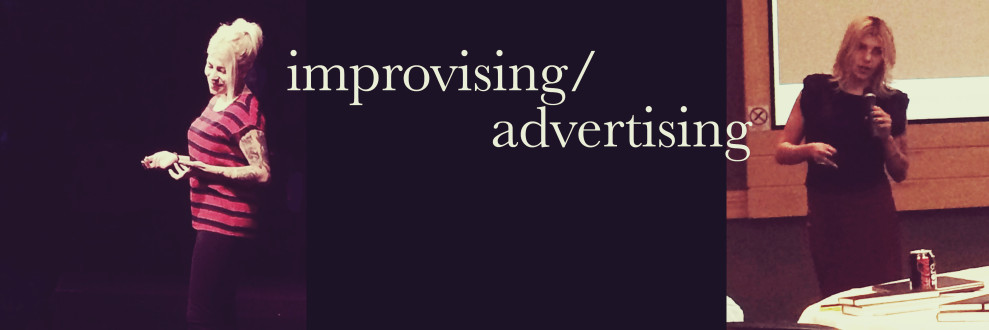Yesterday I leapt onstage at the Upright Citizens Brigade Theater in LA alongside six other people, with a plan to entertain a crowd, unscripted, for thirty minutes. This could have been terrifying, but for three reasons, it wasn’t. I’d prepared as much as I could. I knew my group. I knew the structure. And I was secure in that.
I started practicing improv theater after realizing there were lessons to be learned in improv that could improve my performance as a strategist and creative. I recommend a basic improv class to anyone involved in advertising, whether you’re on client side, the creative department, or a CEO. Not only does improv push you to develop your on-the-spot thinking skills, it develops confidence, awareness, and creativity. I’ll get specific, even, and detail three ways improv helped me improve.
Team playing //
Connecting with a team is a huge need for strategists. Planners have to be extremely diplomatic, guiding creative ideas into a format that’s best for the consumer. You can’t shoot down a creative idea or clash with a creative director. Even if you know the research shows nobody will use this app for more than thirty seconds. Improv’s most famous rule is “yes, and.” In a successful skit, you don’t say “no” to an idea. Your character may say no, but as a performer, you accept the reality your scene partner creates, no matter how wild. It’s about trust and respect, and finding a place where both realities can live together. “Yes, and,” your way to a creative solution. “Yes, and while we know branded apps that push news to the user are rarely used more than a few times, this creative could work well in an e-newsletter, or integrated into a Pinterest board.”
Unique approaches //
Strategic planners can never deliver a basic performance from a template– each project and each brief has to be custom, crafted, intelligent. Otherwise we’re dead weight at the conference table. Improv is about delivering a custom performance every time. There’s no backup script or character to revert to. It’s all in the moment. Never performed before, never performed again. Part of creativity is the ability to accept any concept or idea, if only for a second. It’s only by accepting the impossible that we break free from tradition. And in advertising, we’re always seeking to disrupt traditional messaging with a new, poignant take on an established offering. Taking on the work required to come up with a unique approach is definitely harder than delivering to basic expectations. But it pays off when a strategy comes to life in the hands of creatives.
Dedicated listening //
We have to hear every detail in improv, remember it, and use it immediately. We have no props, costumes, or sets. The audience has nothing but our words and actions to interpret, and not only must these be crystal clear, they have to be completely aligned in order to tell a story that makes the audience laugh. Names of characters, details about who’s who, aspects of the environment, accents and relationships… all quickly created by improv actors, operating on instinct. In a performance, it’s not enough to think quickly. You have to listen closely. This is incredibly relevant for meetings, especially with the client. The client knows more about their product than agency folk could ever think to ask– and we have to keep our ears peeled for details and comments that could reveal important insights. Listen closely instead of waiting for your turn to speak, and you’ll start to understand the objectives your clients value, the things that scare them, and how this specific project fits into a larger plan. At the very least, listening closely to your client allows you to understand the terminology used to describe the brand or product attributes.
Live, learn, and take an improv class.
xo,
suzymae












